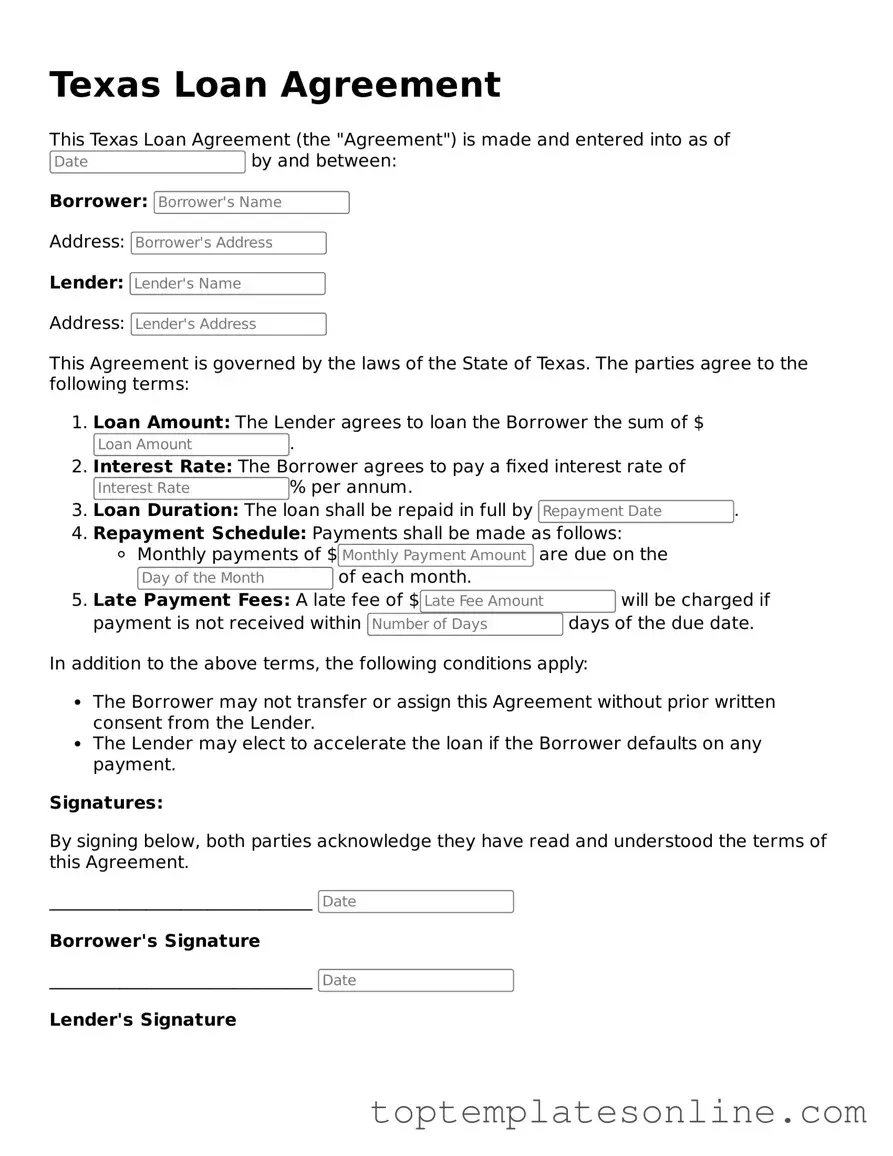Blank Loan Agreement Template for Texas State
The Texas Loan Agreement form is a legal document that outlines the terms and conditions under which one party lends money to another. This form serves as a crucial tool for both lenders and borrowers, ensuring clarity and protection for both sides. Understanding its components can help individuals navigate the borrowing process more effectively.
Customize Loan Agreement Here
